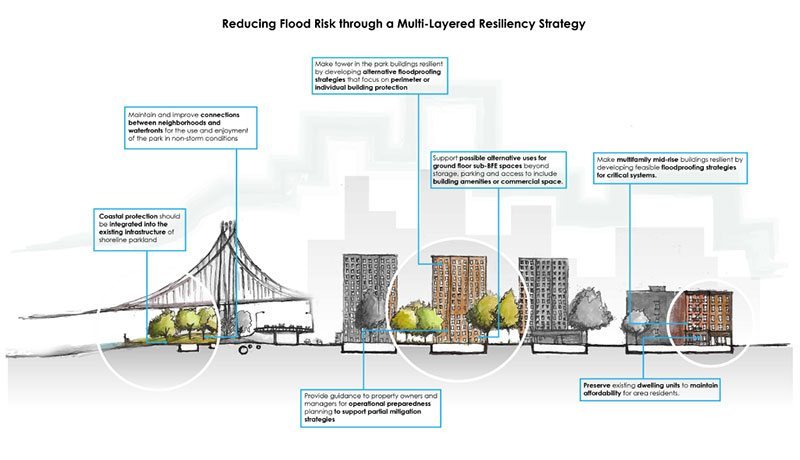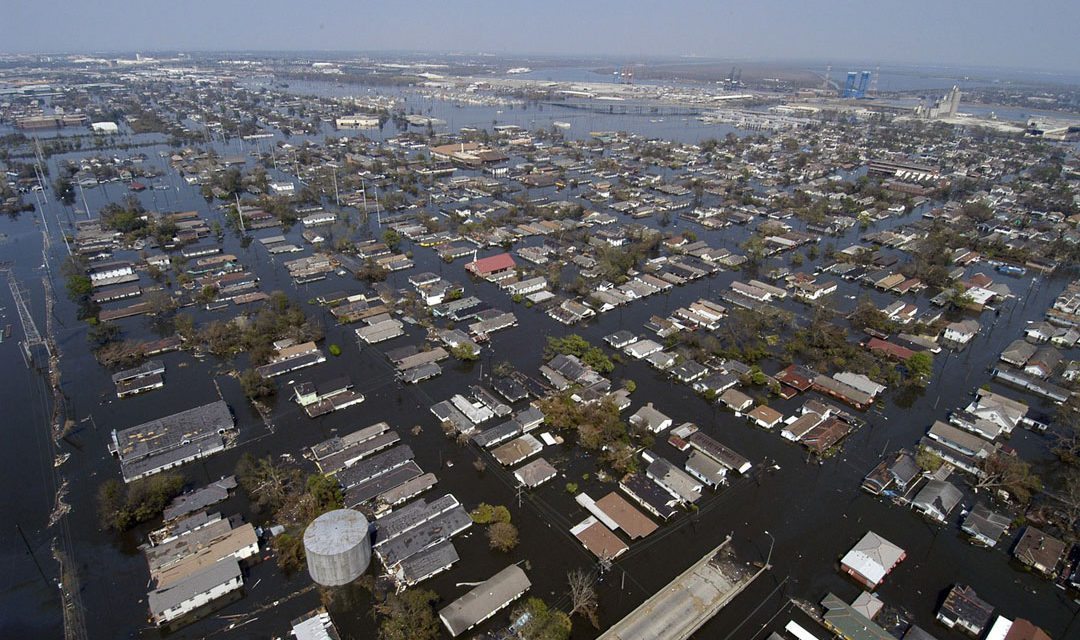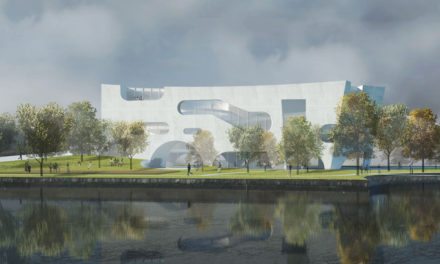If nothing else, this last month has proven that climate change is an inevitability that we as designers and builders need to consider as part of our everyday practice. At the time that this article is being written, Houston is reeling in the aftermath of Hurricane Harvey. Irma devastated parts of the Caribbean, the Dominican Republic, Cuba, and Florida with its unsettling records for size and duration of wind speed. Less than a week later, Hurricane Maria impacted the Caribbean once again decimating some of the smaller islands, as well as leaving Puerto Rico in a state of emergency with flash flooding and mudslides and power outages that could last up to six months. After the initial impact of Hurricane Katia, Mexico has experienced the strongest earthquake in a century at a magnitude 8.1, followed two weeks later by another magnitude 7.1 earthquake. Wild fires are rampant in the Pacific Northwest, stretching from western Oregon and Washington to Montana and Idaho. And monsoon flooding in India, Bangladesh, Nepal, and Pakistan is the worst the region has seen in years, submerging more than 3,000 villages.
 Resilience is multi-faceted when it comes to the built environment. The definition is not simply about helping communities build back to better prepare for future events. It is also about responding to stresses on a project that have implications beyond one site. It is about respecting the memory of past disasters so failures are not repeated in the future. Resilience has economic, social, and environmental implications. As protectors of the health, safety, and welfare of the public, it is our duty to arm ourselves and our clients with the knowledge required to address issues related to resiliency.
Resilience is multi-faceted when it comes to the built environment. The definition is not simply about helping communities build back to better prepare for future events. It is also about responding to stresses on a project that have implications beyond one site. It is about respecting the memory of past disasters so failures are not repeated in the future. Resilience has economic, social, and environmental implications. As protectors of the health, safety, and welfare of the public, it is our duty to arm ourselves and our clients with the knowledge required to address issues related to resiliency.
The first step is internal education. We need to be climate literate to be able to design to mitigate damage during future events. Organizations including FEMA and the National Disaster Preparedness Training Center (NDPTC), for example, host training and certification programs. New accreditation programs are being developed by USGBC and the AIA. Volunteer opportunities are abundant, especially after an event. Getting hands-on experience with rebuilding efforts and participating in community outreach can be invaluable to future funded projects. With the magnitude of rebuilding efforts that will be required, growing a network of potential partnerships and project teams will be key to developing this expertise.
The only way we will be able to build resilience into future planning is to provide our clients with the critical information they need to make the best decisions on projects. Often client organizations have set protocols for communication in the event of a disaster. Rarely are those protocols considered when it comes to real estate transactions. By fully understanding a project holistically, including unique site risks, insurance programs, and funding opportunities such as community block grants, we can advise our clients to make the best decisions. Additionally, facilities managers, who are in the trenches dealing with preparations before and repairs after events, need to fully understand how to best operate buildings—particularly when newer strategies and building systems are implemented.
Ultimately, it is design and construction that will address project-specific vulnerabilities and test the success of implemented strategies. The baseline should include sustainable methodologies, considerations of site conditions, and the location of vital building systems. Beyond that, we need to incorporate multiple levels of defense at a scalar level. It is a given that future events will not be exact replicates of those in the past. We need to experiment with new ideas. How do we live with water rather than barricade against it in flood-prone areas? How do we insulate our buildings to withstand extreme heat events? How does our landscape design need to change in areas that experience extended droughts? How do we design singular projects in a way that reinforces the community where it resides? What can we learn from other countries around the world that have dealt with extreme weather much longer than we have in the U.S.? How are they changing their standards and regulations as their extreme events increase, as well? We need to be diligent about evaluating and sharing both our successes and failures.

For resilience to be viable, our architecture and construction practices need to commit on financial and business-development levels. The execution of resiliency efforts can culminate in many ways within an organization, whether it is developing an incubator for research and development, or establishing a practice area focused on post-disaster assessments and rebuilding. Clients may be the key to opening doors to new efforts, and resources may be put toward seeking out projects and clients that are open to testing new ideas. Building a values statement will help articulate resiliency objectives within our organizations.
In addition to natural elements causing damage to communities, it is often the built environment that amplifies problems. In the case of Hurricane Harvey, for example, the future months will reveal the true detriment of aging, neglected infrastructure and the absence of zoning regulations. While meteorologists are getting better at predicting events through new technology, detailed mapping and data about site conditions are woefully outdated. Our only option is to stay current, educate ourselves and our clients, and become staunch advocates for building responsibly in the age of climate change.
About the author
Jessica Sheridan, AIA, LEED AP BD+C
Senior Associate at Mancini Duffy
 Jessica Sheridan, AIA, LEED AP BD+C, is a Senior Associate at Mancini Duffy, managing a range of accounts specializing in workplace interiors. She is establishing the firm’s resiliency practice using her experience as co-chair of the Waterfront Working Group (part of the AIANY Post-Sandy Initiative), and as a member of the AIANY Design for Risk & Reconstruction Committee and the AIA National Community Resilience Network. She holds a certificate from the HURRIPLAN Resilient Building Design for Coastal Communities program, recognized by FEMA.
Jessica Sheridan, AIA, LEED AP BD+C, is a Senior Associate at Mancini Duffy, managing a range of accounts specializing in workplace interiors. She is establishing the firm’s resiliency practice using her experience as co-chair of the Waterfront Working Group (part of the AIANY Post-Sandy Initiative), and as a member of the AIANY Design for Risk & Reconstruction Committee and the AIA National Community Resilience Network. She holds a certificate from the HURRIPLAN Resilient Building Design for Coastal Communities program, recognized by FEMA.
Jessica received a BA degree in Visual Arts from Oberlin College, and a MArch from the Rhode Island School of Design. She is a licensed architect and serves as a New York Regional Representative on the AIA Strategic Council.





